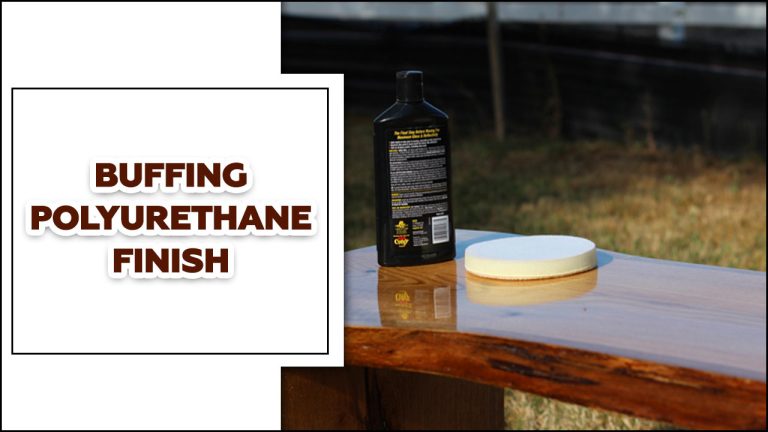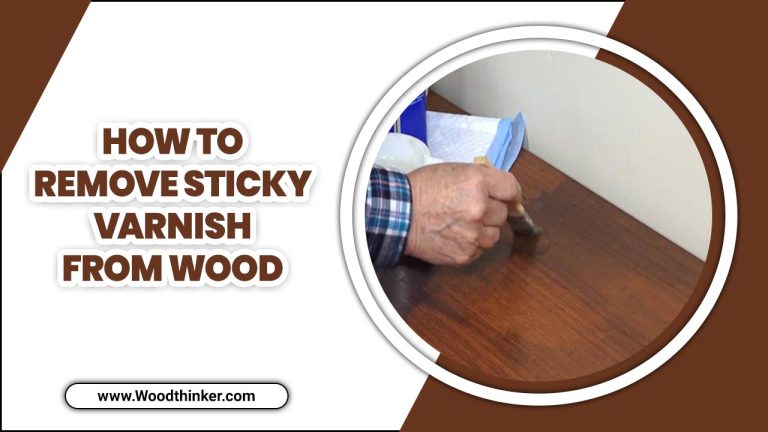How To Fill Gaps In Wood Decking | 6 Steps Guideline
Wood decking is popular for outdoor spaces due to its natural beauty and durability. However, even the most well-constructed wood deck can develop gaps between its boards over time.
These gaps not only detract from the overall aesthetic of the deck, but they can also pose safety hazards and compromise the deck’s structural integrity. As such, it is important to address and fill these gaps promptly. We will discuss how to fill gaps in wood decking and the common issues that can arise from gaps in wood decking.
We will also provide step-by-step instructions on effectively filling these gaps and restoring your deck to its former beauty. Let’s dive in and explore the best practices for keeping your wood deck in top shape.

6 Steps To Fill Gaps In Wood Deck
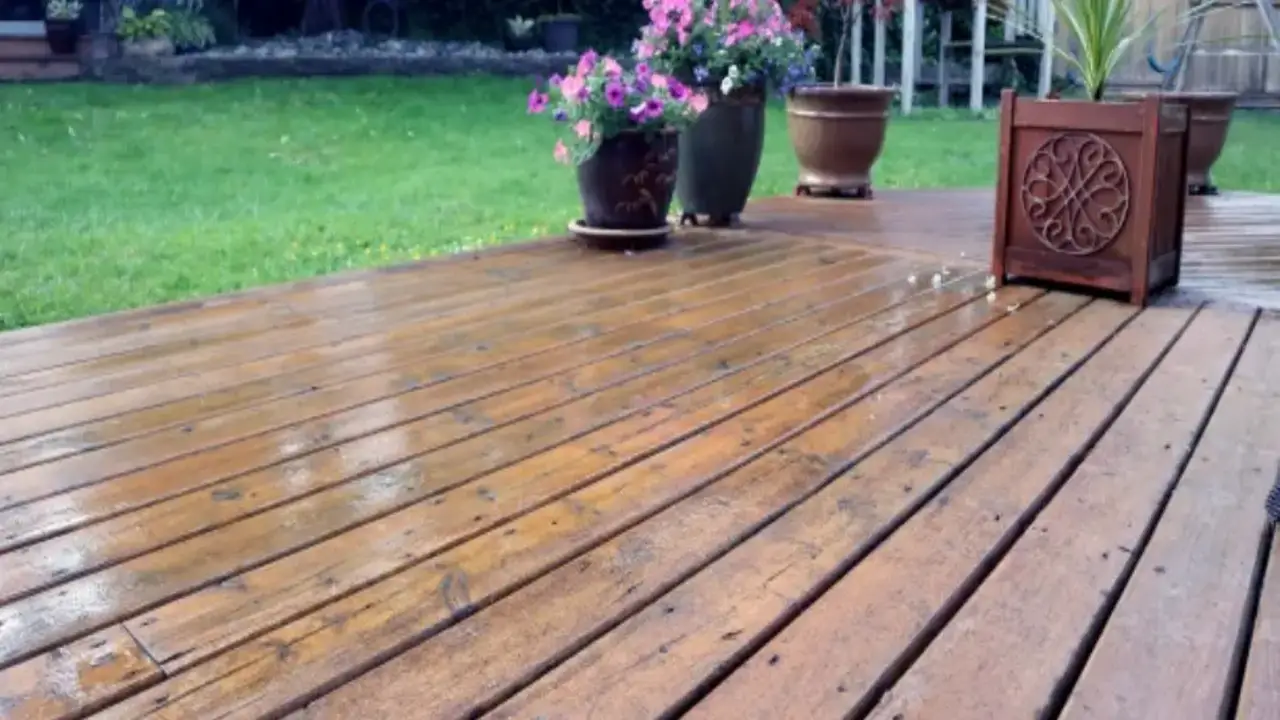
Filling gaps in a wood deck is essential for preserving its structural integrity. Over time, these gaps can allow water, dirt, and debris to accumulate, leading to moisture damage and rot. By filling the gaps, you create a barrier that prevents water infiltration and minimizes the risk of decay. This enhances the deck’s longevity and ensures the safety of those who use it.
1.Make Sure The Deck Is Level
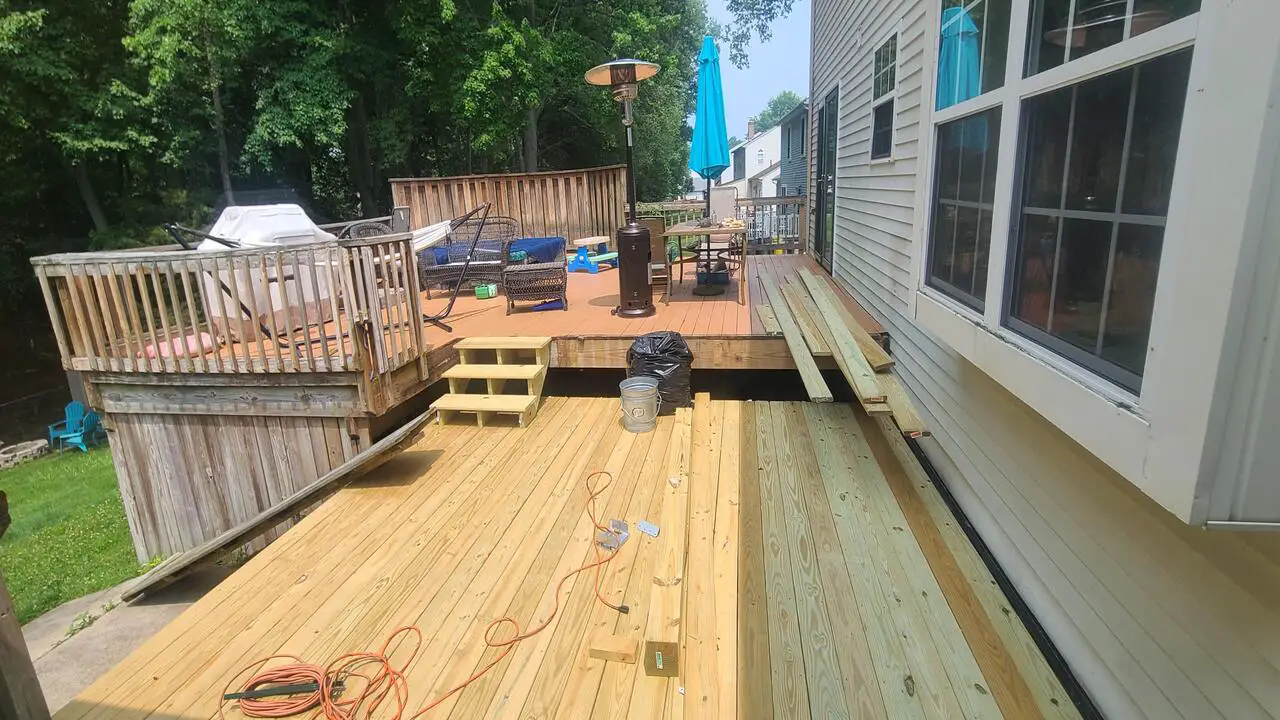
When working on a wood deck, it is essential to ensure it is level. One common issue that may arise is the presence of gaps between the deck boards. These deck board gaps can not only be unsightly but can also compromise the deck’s integrity.
To address this problem, it is recommended to use deck oil or other appropriate products to fill in the gaps. This will not only improve the deck’s overall appearance but also protect it from further damage. Once the gaps are filled and the deck is leveled, applying a suitable finish will add the final touch, resulting in a beautifully finished deck.
2.Cut Teak To Fit Tight Spaces
One important aspect is addressing the gap between deck boards. You can achieve a seamless finish by cutting teak to fit these tight spaces. Additionally, using a transparent deck stain will enhance the natural beauty of the wood while protecting it from the elements. To keep your deck in top shape, use abundant deck cleaners recommended by the authority on wood deck maintenance. Whether you have a boat deck or a regular one, these steps will help maintain its longevity and aesthetics.
3.Remove Any Debris
Before painting your deck, ensuring the Surface is properly prepared is crucial. This process includes removing any debris or loose materials from the deck. To effectively remove any debris, start by assessing the area and identifying the type of debris.
Use appropriate tools like brooms or rakes to gather and collect the debris, then dispose of it properly. Regular maintenance is key to keeping your space clean and debris-free. Next, closely examine the deck boards to check for any cracks or damage. If you come across any cracks, fill them in before proceeding.
4.Nail Grooves Around Edges
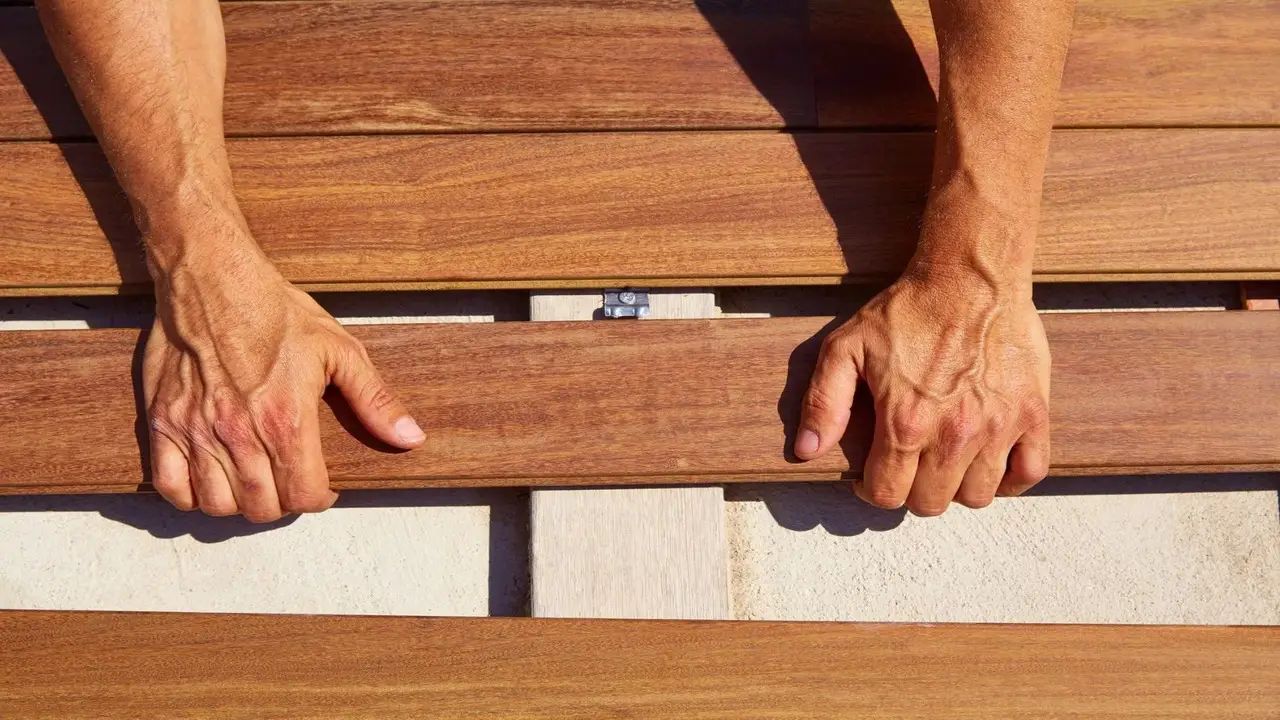
There are a few ways to fill gaps in wood decks. One is to use nail grooves around the edges of the deck to hold the boards in place. Nail grooves can be pre-made, or you can make them yourself using a saw and a drill. Another option is to use dowel jigs. Woodworkers insert dowel jigs into the gaps between boards and hold them with screws. They come in different sizes, so you can find one that fits the size of your gap perfectly.
Both of these methods work well but have advantages and disadvantages. Nail grooves are easier to install but may only hold up if dowel jigs do. On the other hand, dowel jigs are more versatile, so you can switch between different options as trends change or your needs change.
5.Use A Joint Compound And Plane Wood Flush With The Surface
Regarding decking, using a joint compound and plane wood flush with the Surface is the best way. This will help achieve a smooth finish that looks neat. Plus, there will be no visible gaps in the decking – ensuring a seamless look throughout. To protect the finished product from weather damage, follow up with a sealant once everything has dried out completely.
6.Sanding And Finishing The Filled Gaps
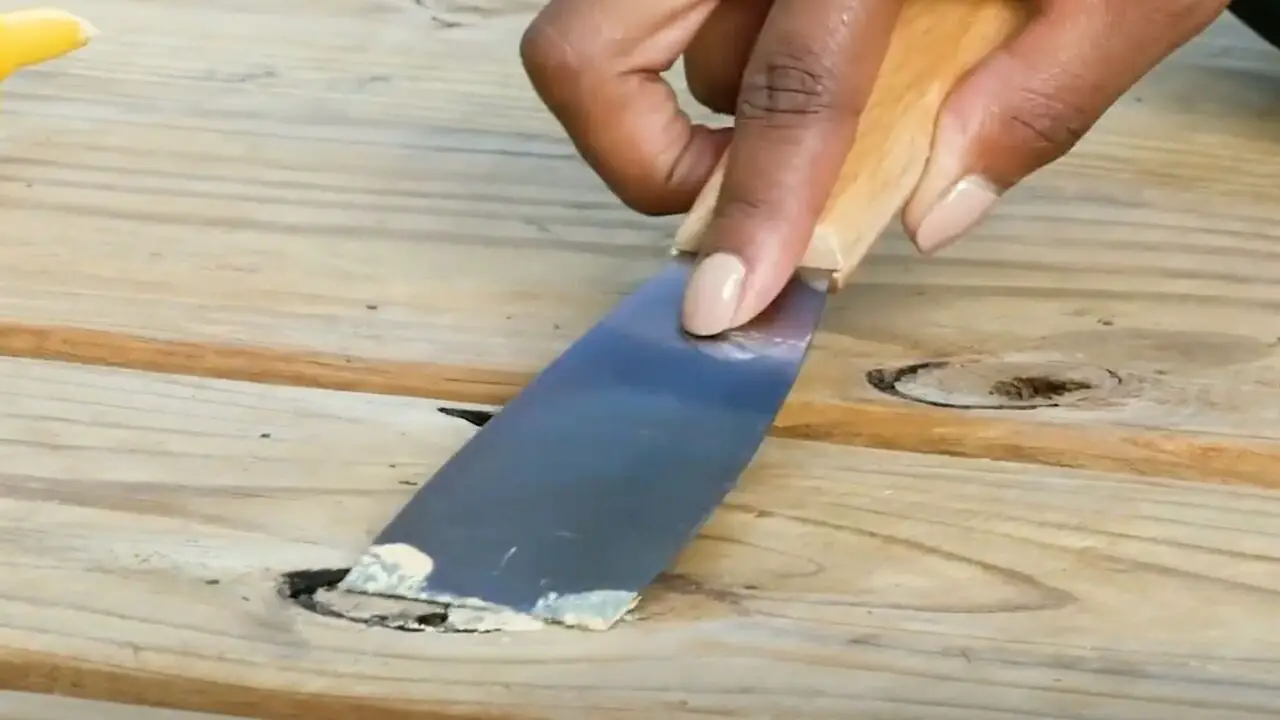
In Michigan, deck cleaning is an essential part of deck maintenance. From deck construction to deck coating, every step counts. One important aspect is sanding and finishing the filled gaps. This involves carefully sanding the filled areas to achieve a smooth and even surface.
Once this is done, applying a suitable stain or sealant that matches the deck’s appearance is crucial. This will enhance the deck’s aesthetic appeal and protect it from the elements, ensuring its longevity.
Stain Or Paint After Filling Gaps
When assessing the gaps in wooden decks, it is important to thoroughly inspect the entire deck to identify any areas that need to be filled. One option for filling gaps is to use caulking, which can be applied between the boards to create a seamless and secure surface.
Another option is to replace damaged or worn-out deck material with new decking material, ensuring a tight fit and eliminating any gaps. For larger gaps, extra steps may be necessary, such as using plastic sheeting or additional support beams to create a stable and even surface.
Choosing The Right Material For Filling Gaps
When filling gaps in wood decking, it is important to select the appropriate material. There are various options, such as wood fillers, caulk, and epoxy. Wood fillers, like outdoor wood fillers, are popular due to their ability to blend seamlessly with the wood surface. However, caulk and epoxy offer more durable, long-lasting solutions, especially for outdoor use.
It’s important to weigh the pros and cons of each option, considering factors like transparency, stain resistance, and compatibility with the deck paint. You should also consider the size of the gaps and the space between deck boards.. Properly selecting the right gap-filling material ensures a smooth and aesthetically pleasing deck surface.
Common Issues That Can Arise From Gaps

Common issues that can arise from gaps in knowledge or understanding include miscommunication, inefficiency, and errors. Without a complete understanding of a particular subject, individuals may struggle to convey information, resulting in misunderstandings and confusion.
Additionally, gaps in knowledge can lead to inefficiency as tasks may take longer to complete or require extra resources. Moreover, errors can occur when important details or steps are overlooked due to a lack of comprehensive knowledge. Therefore, it is crucial to identify and address these gaps to ensure optimal performance and success.
- Lack of continuity
- Difficulty in understanding context
- Miscommunication
- Inefficiency in decision-making
- Risk of errors
- Task overlook
- Tracking and improvement challenges
- Decreased productivity
What Is The Best Wood Filler For Decks?
When finding the best wood filler for decks, there are a few factors to consider. One option is to mix warm water with wood flour to create a paste-like filler that can be applied to cracks and gaps in the deck. Another option is to use a commercial wood filler, such as those available at your local hardware store.
These fillers often come in different shades to match the color of your deck. Before applying any filler, it’s important to prepare the surface by cleaning it thoroughly with an orbital sander and removing any loose or damaged wood. Pay special attention to the corners of the deck, as they are often prone to cracking and may require extra attention when filling.
Conclusion
Filling gaps in wood decking is a simple and effective way to improve your deck’s overall appearance and structural integrity. In addition to improving your deck’s appearance and structural integrity, filling gaps in wood decking can also provide other benefits. One major advantage is that it can prevent moisture and debris from getting trapped between the boards, leading to rot and decay.
You can achieve a professional and long-lasting result by following the proper techniques and using high-quality materials. Remember always to prioritize safety and carefully assess the condition of your decking before beginning any repairs or renovations. With the right approach, you can fill the gaps in your wood decking and enjoy a beautiful, sturdy deck for years.




